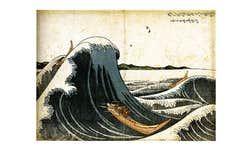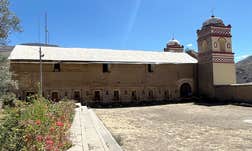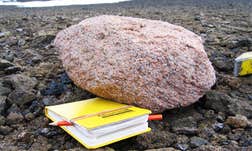One of most immediately striking features about Bernie Krause is his glasses. They’re big—not soda-bottle thick, but unusually large, and draw attention to his eyes. Which is ironic, as Krause’s life has been devoted to what he hears, but also appropriate, since it’s the weakness of his eyes that compelled Krause to engage with sound: first with music, and later the music of nature. Nearsighted and astigmatic, Krause has spent most of the last half-century recording biological symphonies to which most of us are deaf.
Even more than Krause sees, he listens. It’s an unusual trait. Ours is a society that privileges vision—illumination is insight, leaders are visionaries, do you see what I’m saying—and the habit extends to our interactions with nature. Take a walk in the woods and you’ll almost certainly be soothed by birdsong and trilling streams and wind whispering in treetops. But when you get home, you’ll likely be asked: What did you see?

That will likely be what you remember, too. The sounds will have been background noise. And in that habit, you won’t be alone. In some ways, scientists have tended not to hear nature. Not that they’ve been deaf; there are plenty of studies on, say, sound production in croaker fish or the neurological basis of finch songs. But to Krause and the scientists he’s inspired in the emerging field of soundscape ecology, traditional bioacoustics has too narrow a focus. Their microphones are stethoscopes pressed to Mother Nature’s chest. Krause records the feedback between the natural world and us.
“The voice of the natural world informs us about our place in the living world and how we’re affecting it,” he says. “It tells us everything we need to know about how we’re doing in relationship to it.”
At this particular moment in Earth’s history—the morning of what some scientists call the Anthropocene, an age in which human influence on natural processes is ubiquitous and immense—we have many tools to measure our ecological impacts: by eye, generally, focusing on particular species or guilds of interest, counting them in the field, peering by satellite at changes in land use, and translating our observations into the language of habitat type and biodiversity.
To Krause, these are measurements best made by listening to natural soundscapes. In a career of listening and recording, he’s amassed a veritable Library of Alexandria of nature’s sounds, and he emphasizes that they’re not merely recordings of individual creatures. The traditional approach of bioacoustics, focusing on single animals and species, is anathema. It’s “decontextualizing and fragmenting,” he says, like trying to extract a single violin from Beethoven’s Fifth Symphony. “Take an instrument out of the performance, and try to understand the whole performance, and you don’t get very much,” he says.
Inevitably Krause has captured the players—bearded seals with voices that echo geomagnetic storms, baboons booming in granite amphitheaters, a fox kit playing with a microphone—but they’re incidental to recording whole habitats and communities.
In his home studio, perched on an oak-covered hillside in Glen Ellen, Calif., Krause plays me some of his favorites: a Florida swamp, old-growth forest in Zimbabwe, intertidal mangroves in Costa Rica, and a Sierra Nevada mountain meadow. As the sounds pour from speakers mounted above his computer, spectrograms scroll across the screen, depicting visually the timing and frequency of every individual sound. They look like musical scores.
In each spectrogram, Krause points something out: No matter how sonically dense they become, sounds don’t tend to overlap. Each animal occupies a unique frequency bandwidth, fitting into available auditory space like pieces in an exquisitely precise puzzle. It’s a simple but striking phenomenon, and Krause was the first to notice it. He named it biophony, the sound of living organisms, and to him it wasn’t merely aesthetic. It signified a coevolution of species across deep biological time and in a particular place. As life becomes richer, the symphony’s players find a sonic niche to play without interference.
“The biophony is the pure expression of life, of the given organisms in a habitat,” he says. “When you’re in a healthy habitat, all the species are able to find bandwidth where their voices fit.” He puts an ancient Borneo rain forest onto the speakers. At the top of the spectrogram are bats, their echolocation a bare hint of a sound to human ears; below them are cicadas, a plenitude of insects, one chestnut-winged babbler and nightjars and the booms of gibbons, each in its own place.
Krause magnifies the view, zooming in so that each animal’s call can be discerned as individual orange dots. From this view, the spectrogram looks like constellations seen through a telescope. “You’ve got a whole universe in there,” he says. “Look at the discrimination here. It’s so beautiful. It tells you how old this habitat is.”
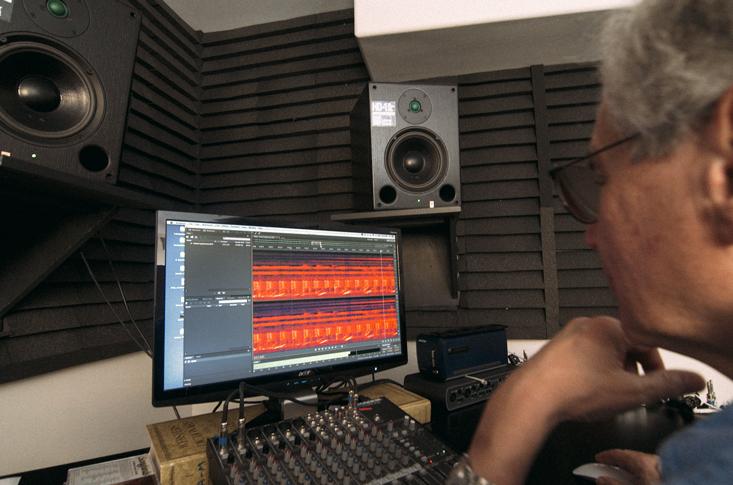
It took a while for Krause’s observation, initially made informally in the early 1980s, to reach sympathetic scientific ears. Krause was not, after all, a member of the scientific community. On his studio walls are photos from his early, pre-nature-music career—Krause singing tenor with The Weavers’ during a 1963 Carnegie Hall performance, the Moog synthesizer he played in early electronic music and for special effects in Rosemary’s Baby and 1978’s Invasion of the Body Snatchers.
But the idea of biophony struck a chord with Stuart Gage, an ecologist at Michigan State University interested in using sounds to take the pulse of ecosystems and monitor their ecological health. He and Krause recorded Sequoia National Park, using an early gauge of acoustic complexity, measuring patterns of species diversity across different habitats and seasons. It was a proof-of-principle test, and in recent years, with the advent of inexpensive recorders and big hard drives that make it possible to record large areas over long periods of time, the field—now dubbed “soundscape ecology”—has flourished.
Researchers are now recording dozens of landscapes across the world and computationally translating thousands of hours of recordings into numerical indexes of ecological conditions, and ultimately the human impacts on them. These are not ready for practical application. The biophony, formally known as the “niche hypothesis,” is still a hypothesis. It’s not yet possible to hear whether an ecosystem is healthy. But that may happen soon. “I think we’re going to see a rapid shift into applied research,” says Bryan Pijanowski, a Purdue University soundscape ecologist, whose projects include sonic assessments of a wildfire-scorched Sonoran desert.
There’s something profoundly important to Krause about the human act of listening, about being there.
Some of the current indexes—Gage is reviewing six, and there are many more—are relatively straightforward counts of animal calls or the total species in an area. Others, however, resonate more closely with Krause’s notion of the biophony. Jérôme Sueur at the The National Museum of Natural History in France is trying to quantify species diversity. One of the indices his group developed, the Acoustic Entropy Index, is predicated on the notion that communities of life in un-degraded habitats become not just diverse, but structured, like Krause’s old-growth Borneo forest biophony.
Ecologist Almo Farina at Italy’s University of Urbino and Italian composer David Monacchi are applying similar ideas to other forests in Borneo, with Farina’s student Nadia Pieretti leading studies of central Italian forests. When the patterns of birdsong in those forests are analyzed and turned into mathematical measures of complexity, says Pieretti, the symphonies of communities subject to road-building and intrusion indeed seem to be less structured. Birds call louder and repeat themselves, perhaps to be heard above vehicular din; there’s more noise, but not more information.
This particular type of biophonic impact, in which human noise—the anthrophony—drowns out nature players, is one to which Krause is especially sensitive. It’s been an active field of traditional bioacoustic study, with researchers finding many cases in which sound pollution seems to interfere with animal communication. That’s not always the case, and often it’s been difficult to disentangle the effects of human presence—the roads themselves, say, not motor noise—from those of our sounds. Soundscape ecology approaches noise pollution in more nuanced ways, focusing not only on noise’s effects on particular species but across habitats and communities.
Although sound indexes of ecological health may be years away, pending rigorous testing, calibration, and codification, Krause says he doesn’t need to wait for the results. He estimates that nearly half of the habitats he’s recorded are now compromised or rendered silent, primarily by human development and insatiable appetites that relegate most non-human interests to irrelevance. Krause requires no scientifically validated tools to hear that feedback. “If you know how to listen to it, then it’s really clear what’s happening,” he says. “As the natural world becomes more silent over time, the question is: Is that what we want?”
Krause is a father of soundscape ecology, but the methods of its maturity are not his own. He created the niche hypothesis, and has made important contributions to the emerging science, but he’s not going to blanket a forest with recorders and let his computer do the listening. There’s something profoundly important to Krause about the human act of listening, about being there.
On a cool March morning, Krause drives me to one of his favorite spots, one he’s recorded since the early 1990s: Sugarloaf Ridge State Park, 4,500 mostly undisturbed acres in the mountains between the Napa and Sonoma valleys. We pull into the parking lot and head up a trail before dawn. Above a ridge to the south, Antares blazes red; Venus incandesces like a flare.
The park is home to an observatory where local stargazers gather for celestial events. On the path, signposts mark the relative distance of the planets from the visitor center’s sun. A little ways beyond Saturn and a tall willow where wild turkeys sometimes roost, beside a stand of coyote brush and bay laurel, Krause stops to set up his equipment. Working by the light of a headlamp, it takes only a minute. He probably could do it with his eyes closed.
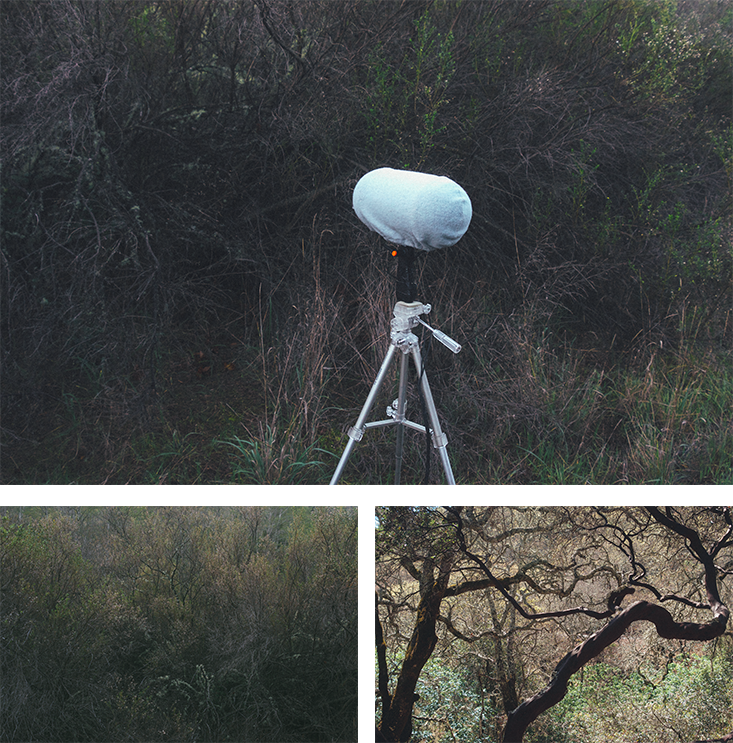
Behind the brush a stand of alders and willows marks the edge of Sonoma Creek, burbling from the rains that ended the region’s seven-month-long dry spell. It’s good songbird habitat, and a few minutes later, after we’ve walked away from the recorder and up the trail, as the sky grows a shade brighter, they start to sing.
It’s the beginning of the dawn chorus: that universal performance, whether in rain forest or tundra or this particular semi-arid riparian pocket, when the community of life greets a new day. Most of Krause’s work, and much of soundscape ecology recordings, involves recordings taken at this information-rich time.
Just why the chorus happens, though, remains a mystery. Many explanations have been proffered, from territorial display to the unique sonic qualities of morning air to the possibility that, in such dim light, there’s nothing else for birds to do. Farina and Pieretti think the creatures in a biophony aren’t just talking to others of their own kind, but listening to each other. Nature recorder Martyn Stewart calls it “a newspaper being read in dozens of different languages.”
First to read the news is a scrub jay. In a few minutes he’s joined by white-crowned and song sparrows, titmice and juncos and towhees and mourning doves. A red-shouldered hawk is heard, and a pileated woodpecker, and a great-horned owl. Just before we return to the recorder, the turkeys make their appearance. They’ve got a lot of news.
Back in the studio, Krause seems a little disappointed, almost like someone who’s heard a band so many times that only exceptional performances stand out. Compared to other choruses he’s heard at that spot, ours was relatively quiet—reflecting, he suspects, the lingering consequences of drought, or changes in local climate. The last few years, says Krause, seem to have become quieter.
Despite Krause’s misgivings, it’s still an extraordinary concert, at least to my ears. Above the creek’s burble, the birds have arrayed themselves neatly in sonic space. The chorus is still rich and orderly. A few jets can be heard in the distance, but without causing any apparent disturbance. Sugarloaf is far from pristine—it was ranched a century ago—but it’s now protected and generally undisturbed. Despite the drought and surrounding urban sprawl, there’s still habitat, a chance for life to flourish.
“Although it is not nearly as robust as in past years, either in density or diversity,” says Krause, “it is, nonetheless, a sonorous and hopeful expression of seasonal life.” As much as Krause laments that many soundscapes he’s recorded will never be recovered, in more hopeful moments he talks of those that might still be protected, even regrow. Where we allow it, life will thrive. If only we would listen.
Brandon Keim is a freelance journalist who writes about science, technology, and nature. His work has appeared in Wired, Aeon, Scientific American Mind, and other publications.



















